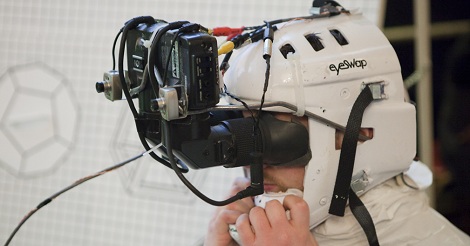
We suppose they could just trade shoes, but that wouldn’t be a hack. [Timothy] wanted to design a team-building exercise at work, and he figured the best way to get some empathy would be to have people swap eyes. He calls his project eyeSwap and it is supposed to, “put the eye back in team.”
[Tim] found a few CRT viewfinders in a junk box attached small video cameras to each one. During the ‘training phase’ of his team-building exercises, both people playing the game complete a few hand-eye coordination tasks to get a feel for the rig. After the training phase, the inputs are swapped; Alice’s cameras are sent to Bob’s viewfinders and vice versa. The participants then complete the same tasks they did during the training phase.
The tasks aren’t that hard – putting balls into holes, for example – but it does require a huge amount of communication and coordination. eyeSwap reportedly builds trust and empathy towards others, and looks like a lot more fun than a ‘trust fall.’
Check out the video of two people playing eyeSwap after the break.
















